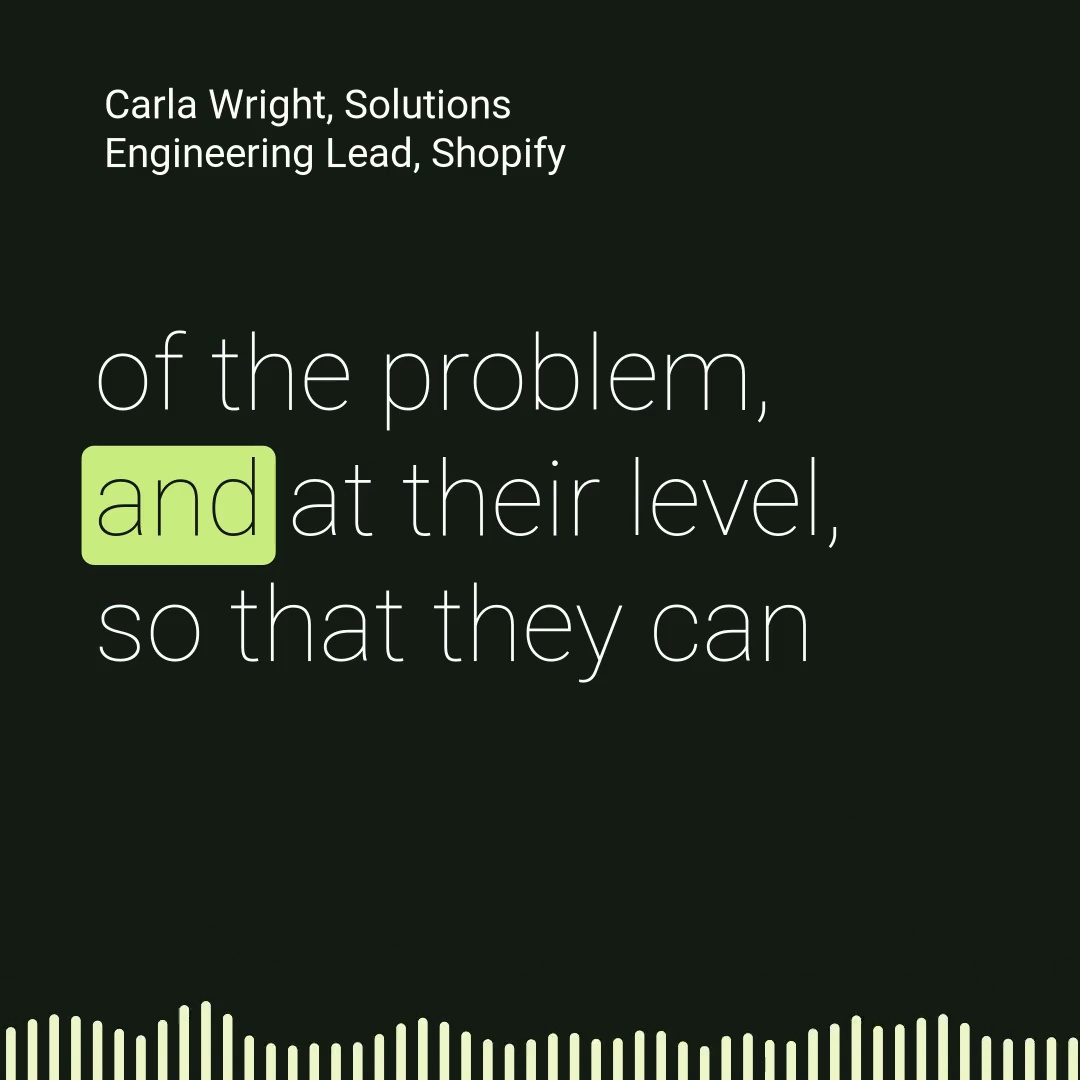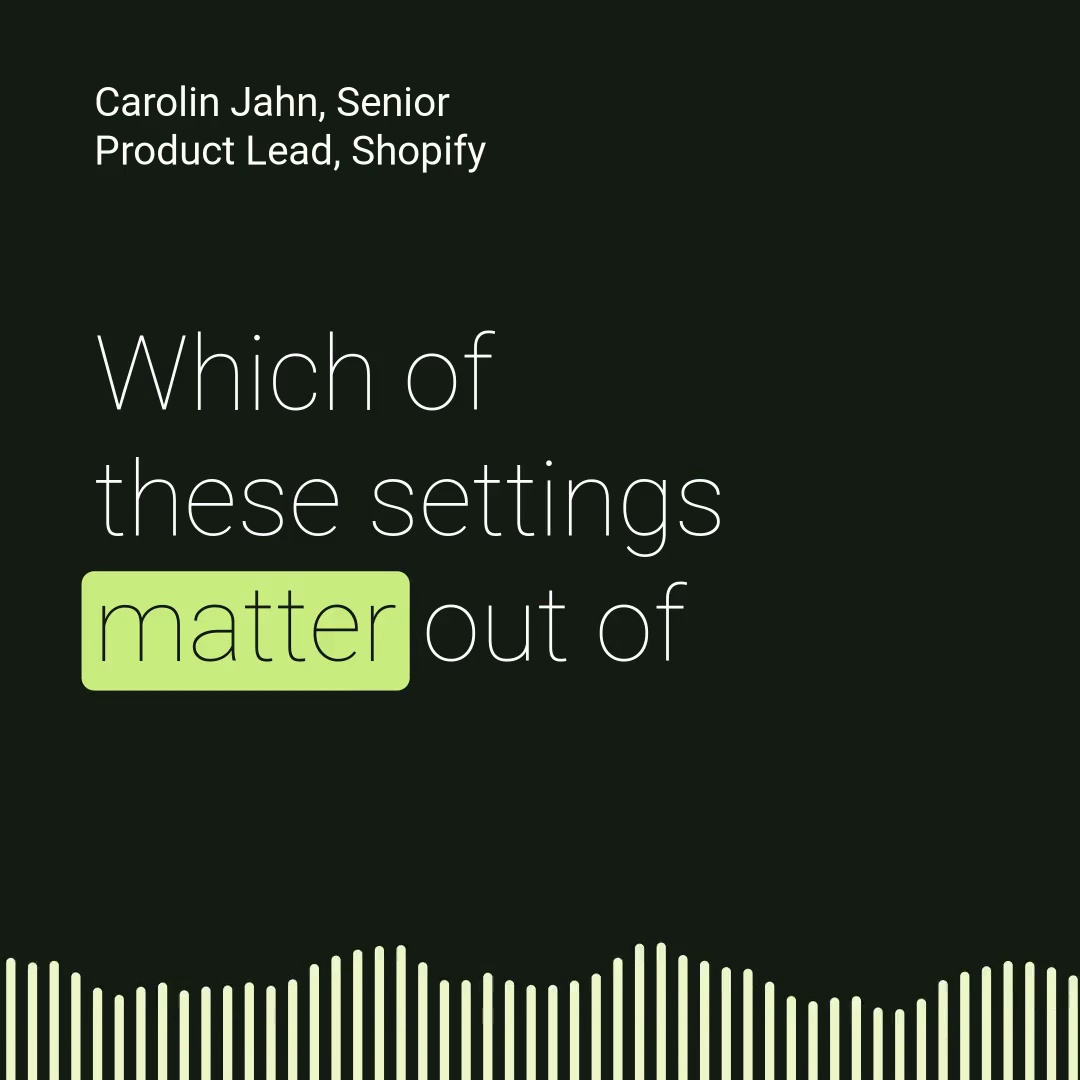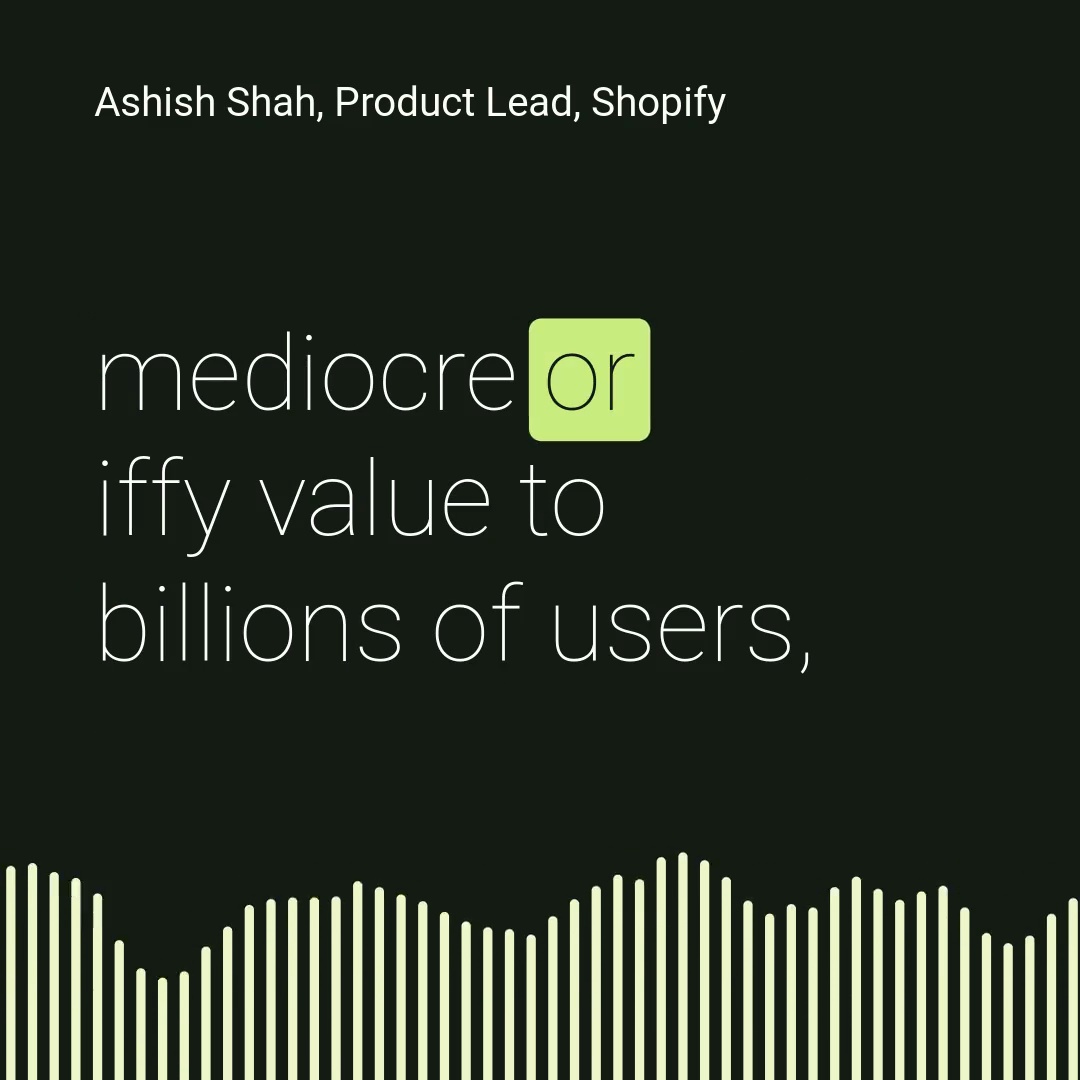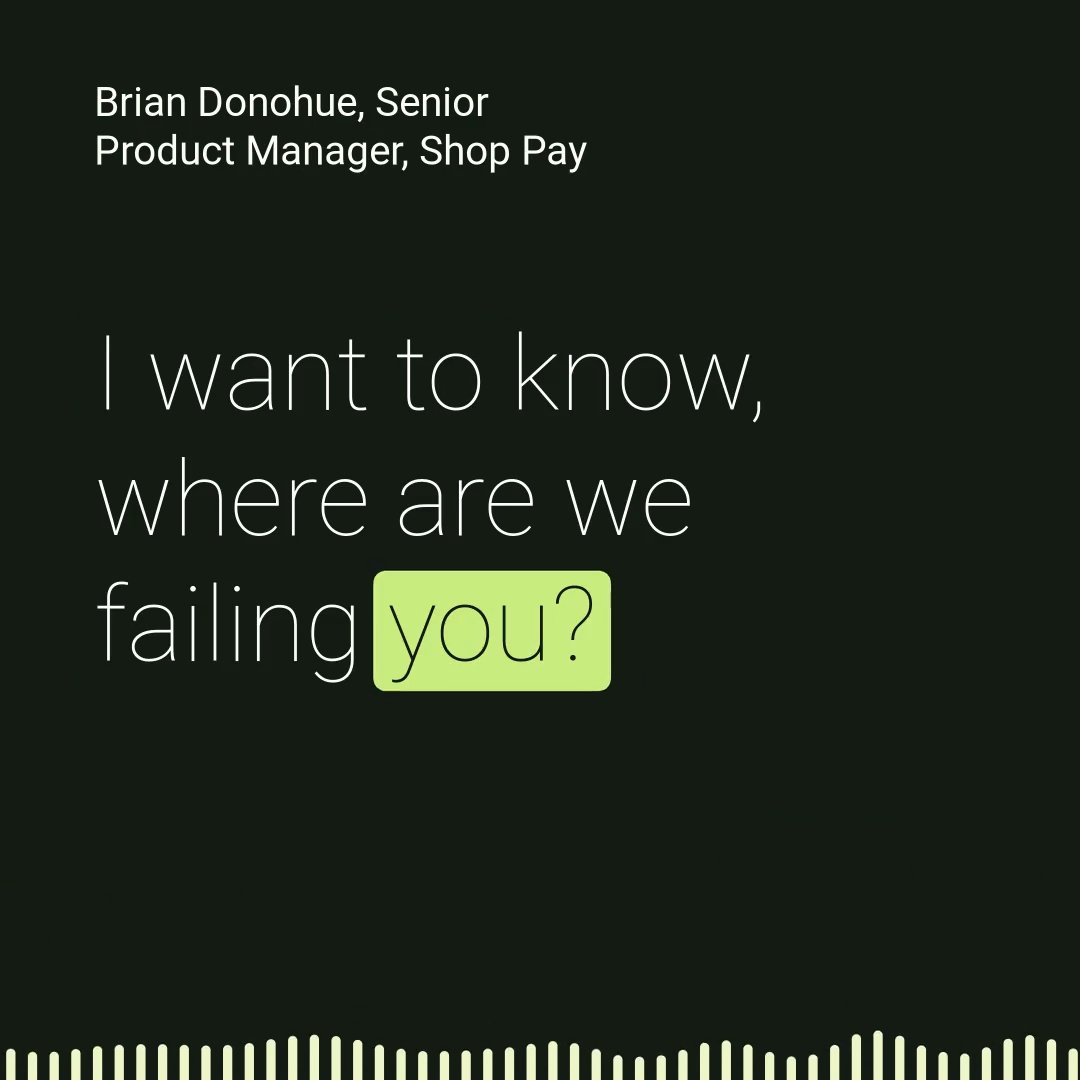Ecommerce moves quickly, especially when it comes to product. Companies are faced with all sorts of technical challenges: improving speed to purchase and conversion rates, taking whatever it is that makes the business profitable and unique, then morphing that into a new webstore feature. Holiday promos and loyalty programs are great, but there’s a good chance what’s best for your company is different than what’s best for, say, a meal kit subscription service or a boutique sunglasses seller. And truthfully, even if you are running one of these things, nuance is important.
Knowing the playing field inside and out isn’t good enough. The best ecommerce platform is one that gets to know your business, and what makes it tick. What makes it special, along with its pressure points. A platform that constantly road tests new potential features and upgrades, working iteratively to assure your tech reinvents itself in real time.
Think of all the ways you’ve adapted to better understand your customers—your ecommerce platform should do the same for you. In this post, we’ll cover everything from the basics of product roadmaps to how we use them at Shopify to always release the best solutions for our customers. Let’s get started.
What is a product roadmap?
A product roadmap is a strategic document that visually outlines the plan and timeline for a product’s development, including its anticipated features, updates, and improvements. It includes product goals, milestones, timelines, and resources, and prioritizes features based on customer needs and business goals.
An effective product roadmap connects the development team with relevant decision-makers inside and outside the company. Topline goals are always in sight and can be hashed out in real time. This could mean proposing a slight tweak to product based on a recent shift in the marketplace, then deciding the best approach according to the customer’s core goals and allocated resources.
Types of product roadmaps
Product roadmaps vary according to the needs of their audiences. Here is a rundown of the main kinds:
- Internal roadmap for the development team: This is a detailed plan for the development team, guiding them through the technical process. This type of roadmap includes components like API endpoints and data models.
- Internal roadmap for executives: This is designed to showcase how the product roadmap aligns with the company’s overall objectives and key performance indicators (KPIs). The internal roadmap for executives should note the budget, headcount, risk assessment strategies, and other factors needed to execute the project.
- Internal roadmap for sales teams: This highlights new features and customer benefits, focusing on how the product will help the sales team close more deals.
- External roadmap for customers: This essentially gives customers a concise, visual explanation of a product’s future direction. It’s designed to generate excitement and interest, and it focuses on high-level benefits customers will experience from new features.
Due to the sheer number of engineers and projects going on at any given time, we don’t release an external Shopify product roadmap. That said, we do release a comprehensive collection of all our product updates in our Editions, released every six months. We also keep a log of changes to our Hydrogen + Oxygen stack. Internally, we collect a wide array of customer feedback to shape our roadmaps across products and features. This is how our roadmaps build what customers need.
Make the most of your product roadmap with feedback loops
Getting the most out of feedback loops is a key driver of success in our product roadmaps. Here’s why:
Shopify uses feedback loops within the company
Whatever the department, we all work on the product at Shopify. Maintaining constant feedback loops allows Shopify team members across different roles to understand where the company is going and help steer objectives and their priorities.
“Some people need to share the feedback vertically, and you need to empower others to share it horizontally,” says Carla Wright, solutions engineering lead at Shopify. “Solutions teams need to translate the needs. I translate from revenue to technical and vice-versa. There are times I have cross-functional teams in the same meeting and I repeat the same thing in multiple ways so that it makes sense to different types of people, and I love that I can do that because it’s incredibly effective to align quickly across many functions. All product teams at Shopify are cross-functional. For all of us to get on the same page, it takes some time—and translation. But being in the room together elevates those ‘ah ha!’ moments faster.”
By being expert communicators with each other, we’re able to connect with customers of all kinds.
Shopify’s product feedback loop fosters collaboration
Shopify’s solutions engineers and solutions architects are talking to clients every day, picking up actionable insights. This could mean dialogue with current clients who know their product and want something very specific out of it. Or with legacy enterprise retailers who are looking for parity in certain areas in order to consider Shopify as a platform.
Through constant feedback loops, we weave client feedback into the products we build. This is where we love to talk about our executive advisory board programming feedback. On a regular basis, we seek feedback from existing and prospective clients: What’s working and what could we do better? What do you wish you could do on our platforms? Is it possible, and if so, how can we put it into action?
Shopify focuses on consumer needs, not the competition
Every business has its own unique story, goals, successes, and uphill struggles. The best ecommerce platform is one that knows your business as well as you do. A flashy new product feature that worked well for a competitor might not make much sense for you.
“To me, innovation means not focusing too much on the competition. You often end up running behind when you do that,” says Carolin Jahn, senior product lead at Shopify. “Focus on customer needs instead of the competition. Competition should be just one of the insights.”
Shopify strives for interoperability
A byproduct of getting so familiar with every customer is knowing where needs overlap—between businesses and between the apps they use. Interoperability is always front of mind when we roll out new products.
Every six months, the latest in our Editions series releases hundreds of new features and updates for businesses. We’re able to make these so bespoke to our clients because of our feedback loops, our passion for product, and our commitment to staying on the pulse of what drives profit for our customers.
What are the benefits of Shopify’s product roadmaps?
When we roll out a new product, we want it to generate excitement. We also want it to be practical. Let’s explore how it all plays into how we design our roadmaps.
Shopify’s goal is to make what’s important easy (and everything else possible)
Let’s say we’re getting to know a customer and we identify a workflow they use a dozen times per day. Or we notice a workflow that’s used by a majority of Shopify customers. Right away, we strive to make this workflow as simple as possible. “It has to be so intuitive you could do it with your eyes closed,” says Ashish Shah, product lead at Shopify.
“But we are also a platform. That means we have to make possible everything else that doesn't fit into this important need. That is the power of the Shopify platform—you may have a very unique, complex workflow, but the platform itself is so broad that you could enable every use case on it.”
Shopify works very iteratively with businesses
We understand that products are fine-tuned in the marketplace, in real time. “It’s better to ship as early as possible than to focus on perfection,” Carolin says.
You could spend ages in development, trying to make the perfect app, only to waste a lot of time and resources because it’s extremely difficult to know how the app will respond to real-world engagement.
Working iteratively with customers is how we learn what works best and how to make it work even better. We’d much rather release that app, refine it as we receive customer feedback, and see its value blossom over time.
Shopify focuses on outcome parity, not feature parity
There are plenty of products that innovate, but don’t offer much value to customers. When we work on new products, we’re not looking to tack on features just to say we did, or to keep up with some imagined arms race.
“Innovation is only innovation if it ships,” says Shah. “When I design products, I ask, ‘Who am I designing for?’ and ‘Who am I not designing for?’”
Shopify’s approach is outcome-focused. It begins and ends with what makes our customers successful. If that means handling 40,000 checkouts per minute, we can do that. If it’s optimizing one particular checkout headache that’s been costing you sales, we can master that, too. We're here to help you reach your outcome goals. And we take this to heart with our own products.
Take our Search & Discovery app for example:
“Rome wasn’t built in a day. Google Search wasn’t built in a day—It took over 25 years,” Carolin says. “But customer expectations for Search are high because of Google Search. That’s what they expect to see. And we have to ship iteratively to catch up. Our goals though aren't feature parity, it’s outcome parity.”
Shopify’s product roadmaps in action
Shopify invests nearly $2 billion per year in R&D. We have thousands of engineers focused solely on commerce. We take a lot of pride in the innovation we offer customers, and at Shoptalk in Las Vegas this past March, we got to tell the world about the successes we’ve enjoyed when our roadmaps kick into gear.
One-stop shopping for soaring conversion rates with Shop Pay
Earlier this year, we unveiled Shop Pay as a commerce component—combining the internet’s highest-converting checkout with the ability to integrate across all commerce platforms.
Shop users were already used to having countless webstores in one app, enabling secure, one-click checkouts and real-time updates on shipping and delivery. We wanted to make our best-in-class checkout available for more customers, whether they already used Shopify as their ecommerce platform or not. Enter Shop Pay. But Shop Pay wasn’t perfected overnight.
“Initially we had taken our entire checkout and created this prototype that created an ongoing sync for all of the business logic between an external platform and Shopify,” says Brian Donohue, senior product manager at Shopify, speaking at our 2024 Shoptalk panel on customer-driven innovation. “We’re getting through this prototype and I’m thinking, Nobody’s going to buy this. It’s more work than just staying on the platform you’re on.”
A year and a half of customer conversations inspired Brian and his team to rework Shop Pay. “We needed something that could be portable, extensible, and work anywhere if we wanted to make inroads off-platform.”
How collaborating with Everlane jump-started Shop Pay
While Shopify developed Shop Pay, the fashion and apparel brand Everlane was seeking to transcend the limitations of their self-built ecommerce platform by simplifying their transaction process and reducing checkout times.
“We wanted to see what the real benefit of a checkout system like Shop Pay could be,” says Can Agaoglu, director of technology at Everlane.
So we teamed up. Last year, Everlane joined on as Shop Pay’s pilot company. "They gave us a deadline and they met the deadline,” says Can, chatting with Brian and other Shopify team members at the Shoptalk panel. “They were always available on Slack for us to talk to and solve problems together."
Since launching Shop Pay together in November 2023, we’ve been thrilled by Everlane’s results. Using Shop Pay’s one-click checkout feature, Everlane reached record highs with checkout conversion rates of up to 70%. And within the first 30 days, an encouraging 15% of Everlane’s audience was already choosing to checkout via Shop Pay.
At Shoptalk, Brian asked Can what Shopify could have done better over the course of the launch. He took a moment and said, “The fact I’m pausing for so long is a good answer.”
How our customer advisory steers you toward success
Shop Pay was just one of several new initiatives we launched last year. At the Shoptalk panel, we got to highlight how customer advisory has helped us to better align with customer roadmaps.
"We don't tend to have as much access with technical people as we have with you,” Can says. "It really helped to connect engineers to engineers, instead of engineers to product managers to engineers. That's key to launching a very complicated system."
We’ve also enjoyed honing our customer advisory initiatives in partnerships with Our Place, Ruggable, and Dollar Shave Club.
Our own roadmaps are often shaped right alongside our clients’. “We have this open line of communication, and it feels like we’re really part of the roadmapping process,” says Danielle Hoo, director of digital product at the LA-based cookware retailer Our Place.
Since partnering with Shopify, Our Place leaped from viral success to international expansion while fine-tuning its customer experience both online and in-store. “We’re informing each other’s respective roadmaps,” Hoo attests.
Ruggable’s high-quality, spill-proof rugs earned a sales spike during the COVID lockdown, as customers began to invest more in home furnishings. Soon after, Ruggable replatformed to Shopify.
"We’ve really enjoyed being able to have such dedicated support,” says Daniel Graupensperger, director of product management at Ruggable. “If we need something, Shopify is always there for us—and that even includes the roadmap. We’ve been able to help make changes to the roadmap and advocate for things that we find most important. Shopify is right there to help make those changes for us."
Dollar Shave Club revolutionized the razor market by delivering high-quality razors to customers’ doorsteps via subscription. But as they expanded throughout the 2010s, Dollar Shave Club’s home-grown platform lagged behind. Seeking a more cost-efficient (and innovative) solution, Dollar Shave Club replatformed to Shopify.
“They partnered with us to develop our roadmaps, giving us visibility into what was being developed and letting us have influence over that roadmap to help us see from the ground floor,” says Kyle Iwamoto, vice president of ecommerce at Dollar Shave Club. “Our partnership with Shopify is critical for our success, and we’re excited to see what the future holds.”
Working iteratively—to (near) perfection—with Shopify’s Search & Discovery app
We launched our Search & Discovery app in 2022 to help customers increase sales, using optimized filter and recommendation functions as the driving principle. Only it wasn’t perfect at first.
Early on, Search & Discovery’s app rating hovered around 1.7 stars. But the point was never to launch a product that was perfect on arrival. The core aim was to start a conversation with businesses and to grow Search & Discovery, tailored to their needs.
“It was a signal for us, saying, ‘We want to invest in the space and we want to build this together with you and have a shared roadmap,’” Carolin says. “We spent a lot of time working with different businesses: What’s really important to your business? Which of these settings matter out of the hundred settings a Ferrari might have?”
We asked a lot of questions, learned what capabilities businesses wanted most.
“We're now at a 4.5 rating, by working really iteratively with businesses and figuring out, What matters to you?"
We’ve got a plan for your product—just ask us
We’d love to get to know your business and what makes it special. It’s what we do. And frankly, it’s how we’ve seen ourselves get better at doing it.
Product roadmaps are a living, breathing, constantly evolving driver of ecommerce. Let’s explore what we can achieve together.
FAQ on product roadmaps
What should you look for in a successful product roadmap?
A successful product roadmap keeps the development team in constant communication with relevant decision makers inside and outside the company. The roadmap should reflect a deep understanding of the customer’s primary differentiators, as well as their pressure points. All this should be incorporated into actionable topline goals, beginning with essential priorities.
What is a common example of a feedback loop?
Ecommerce brands use feedback loops to improve their products, customer experience, website, etc. A common example is utilizing up-vote functions while developing new products to see what customers think of new ideas.
How can feedback loops enhance customer experience?
Feedback loops can enhance customer experience by giving customers a voice to every step of the process in rolling out a new product. This can be done through methods as simple as Slack channels and post-purchase email surveys, or through in-person roadmap presentations.
What is the difference between vertical feedback and horizontal feedback?
Vertical feedback travels hierarchically (i.e., senior management passing feedback down to middle management, who disseminate it to their teams), while horizontal feedback often fosters more genuine, collaborative action by facilitating feedback across all organizational levels and departments.






